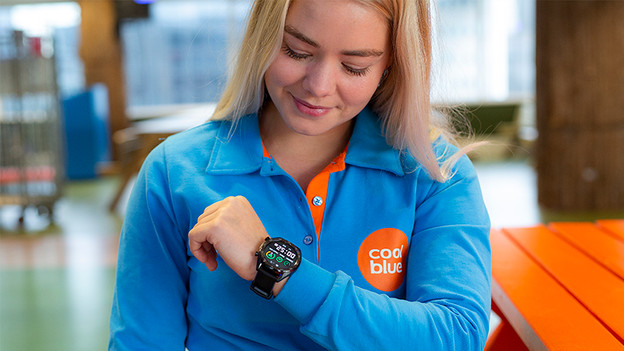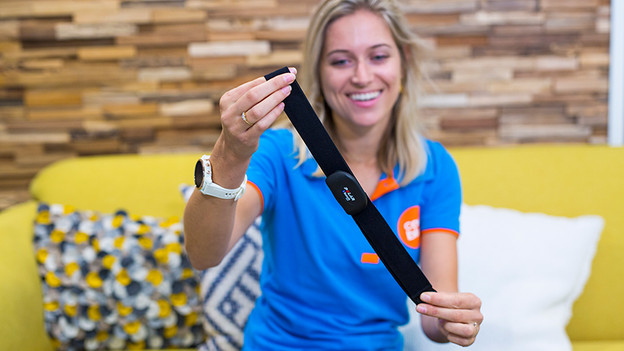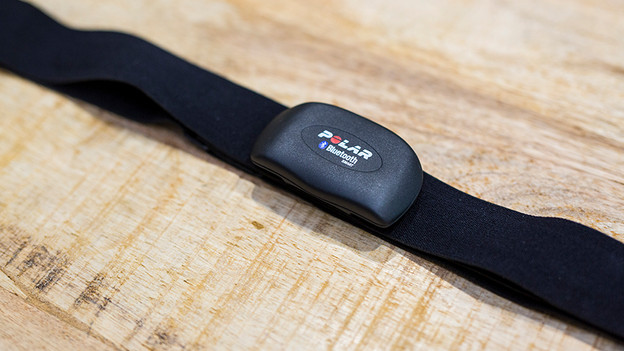
Written by Lieze
Edited on
2 November 2023
·
16:40
8 tips for accurate heart rate reading via your smartwatch
You want to measure your heart rate with your watch, but what's the best way to do this? A good wrist measurement depends on your physical condition and how high you wear the smartwatch on your wrist. We'll give 8 tips for an accurate heart rate measurement. Here's a little sneak preview. It's important you wear the watch as high as possible on your wrist and make sure that no light gets between your wrist and the sensor. For a really accurate measurement, connect a heart rate monitor with chest strap.
Summary of tips
You can get a reliable heart rate measurement via your smartwatch with these 8 tips:
- Wear the watch 2 fingers above your wrist.
- Wear the watch tightly, so it doesn't shift.
- Start the heart rate measurement before you start your workout.
- Don't use a wrist measurement for interval and strength training.
- Update the software regularly.
- Remove the sticker and keep the sensor free from dirt and scratches.
- Take your fluctuating heart rate into account.
- Connect a heart rate chest strap for really accurate readings.


Tip 1: wear the watch 2 fingers above your wrist joint
Where you wear the watch on your wrist is important for the outcome of the heart rate measurement. The higher the better. That is why we recommend wearing the watch at least 2 fingers above your wrist during a workout. The sensor 'reads' your blood flow through tissue. The softer the tissue, the better the measurement. Do you have any tattoos? Wear the watch on the wrist without tattoos. Some inks affect the reading.

Tip 2: wear the watch tightly, so it doesn't shift.
Light between the sensor and your wrist interferes with the measurement. You can prevent light from interfering the measurement by tightening the strap a bit more than you're used to. It should be tight so it doesn't shift, but it shouldn't restrict your circulation. Is your strap too big, too small or is it just not connecting? Consider purchasing a new strap.

Tip 3: start the heart rate measurement before you start your workout
Wait a moment before you start working out when you start a measurement or sports mode. The watch needs a few minutes to be able to do a stable measurement. We also recommend a small warm up. Your heart rate will be higher when you start your actual training. The heart rate sensor in your smartwatch will measure a higher heart rate more easily.

Tip 4: no wrist measurement with interval and strength training
A wrist sensor doesn't measure interval and strength training as well as a heart rate chest strap. That's because a heart rate chest strap measures your heartbeat, while the wrist sensor measures the oxygen released in your blood. This means that a wrist sensor is always behind. This isn't very convenient during sprint or interval training. During strength training, your muscles contract in an unnatural way. This affects the measurement. That's why we always recommend a heart rate chest strap for these types of workouts.

Tip 5: update the software regularly.
The algorithms that determine the accuracy of the measurement for the most part are constantly changing. Make sure to update the software of your smartphone as soon as a new update is available. You can do this via the accompanying app on your smartphone.

Tip 6: keep the sensor free from dirt and scratches
Some smartwatches have a sticker on the heart rate sensor for protection. Remove this sticker, because it blocks the sensor. Scratches and dirt make the measurement less effective as well. That's why you should handle your watch with care and clean the sensor once in a while. Use a damp cloth for this.

Tip 7: take your fluctuating heart rate into account.
It's important to keep in mind that your heart rate is continuously changing. That's because it depends on your physical condition. Your heart rate can be higher or lower when you're tired or sick, for example. The same applies to when you're stressed, had a lot of coffee, or when it's warm out. Are you in doubt, or aren't you feeling well? Always contact your doctor.

Tip 8: connect a heart rate monitor for more information
Even though a wrist measurement gives a good and reliable indication of your heart rate, it's never as accurate as a measurement via a heart rate monitor on your chest. That's why you should connect a heart rate chest strap to your smartwatch or smartphone for a very accurate heart rate measurement.
Heart rate measurements less accurate due to tattoos
A tattoo under a heart rate monitor can reduce the effectiveness of an optical heart rate monitor. The light used by the heart rate monitor is blocked by the ink and the pattern. As a result, you can get a less accurate heart rate measurement
